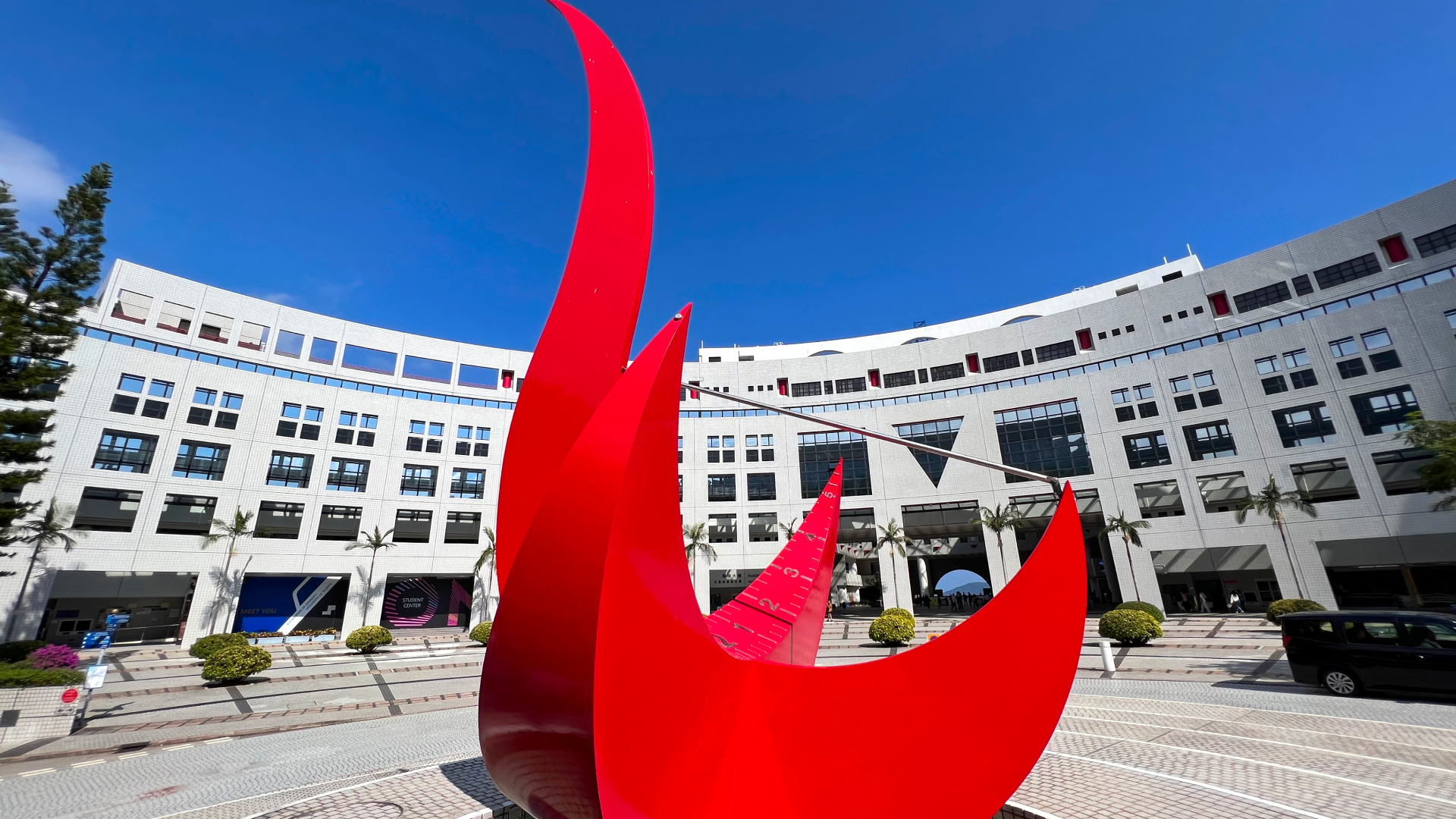News & Stories
2020
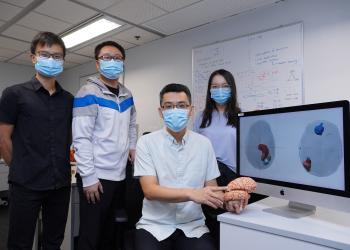
News
HKUST Researchers Uncover Chemo-resistance Mechanism in Glioma Patients
An international research team co-led by the Hong Kong University of Science and Technology (HKUST), Beijing Neurosurgical Institute, and the Spanish National Cancer Research Center (CNIO) has discovered a mechanism that explains why patients of gliomas – a common and aggressive type of brain tumors, would develop chemo-resistance, potentially allowing early identification of drug-resistant brain cancer patients.
At present, the main treatment for glioma is a combination of surgery, radiotherapy and the chemotherapy agent temozolomide (TMZ). This type of treatment can usually prolong patients’ overall survival time. However, most of them would suffer a relapse and some would become resistant to TMZ.
2019
News
HKUST Researchers Co-Discover a Novel Function of an Enzyme Offering Insight Into the Pathology of Hereditary Spastic Paraplegia
Researchers of the Hong Kong University of Science and Technology (HKUST) and Institute of Biophysics, Chinese Academy of Science recently identified that an enzyme called atlastin (ATL) is used to regulate the transportation of proteins within cells. This novel finding offers new insights into the pathology of Hereditary Spastic Paraplegia – a rare inherited disorder with symptoms of lower limb spasticity accompanied by possible neurological deficiencies.
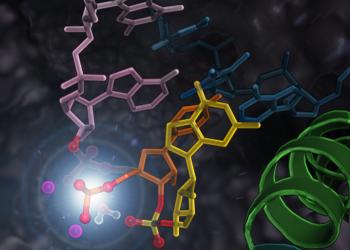
News
HKUST Scientists Discover How RNA Polymerase II Maintains Highly Accurate Gene Transcription with High-Performance Computing
Scientists from the Hong Kong University of Science and Technology (HKUST) have recently uncovered the mechanisms of how RNA polymerase II performs intrinsic cleavage reaction to proofread RNA transcriptions, shedding light on how mis-regulation of accurate transcription can lead to diseases including cancer and Alzheimer’s disease.
The message of life is encoded in our genomic DNA through transcription of messenger RNAs and translation of proteins to perform cellular functions. To ensure accurate transcription – a process that transcribes genomic DNA into messenger RNA by adding nucleotides one by one like letters in the alphabet, an enzyme called RNA polymerase II would synthesize and proofread messenger RNA to remove any mis-incorporated nucleotides that do not match with the DNA template.
News
HKUST Researchers Discover More Than 7,000 New Microbial Species Enhancing Our Understanding of Ocean Biodiversity
A group of marine scientists at The Hong Kong University of Science and Technology (HKUST) recently discovered over 7,000 new microbial species in the Oceans, including Acidobacteria – a natural medicinal phylum with the CRISPR gene editing system discovered at sea for the first time, shedding new light on human’s understanding of microbial biodiversity in the oceans and bringing hope to the development of new drugs.
2018
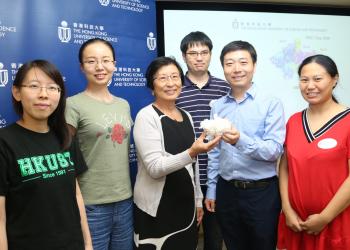
News
HKUST Scientists Determine Atomic Structure of DNA Replication Machine to Make Groundbreaking Discovery of DNA Replication Mechanism
Cells propagate by making copies of themselves through replicating their DNA genome, which are blueprints of their identities. Every full grown human came from a single fertilized egg cell whose genome is replicated approximately 10 million-billion times. What does the molecular machine that carries out this Herculean task look like? A research team led by scientists from the Hong Kong University of Science and Technology (HKUST) have determined the three dimensional structure of the DNA replication machinery at atomic resolution for the first time in history.
When DNA replication was first proposed based on its double helix structure over half a century ago, many believed that deciphering the machine that separates the two strands of DNA for replication is near to come. However, it turns out to be a much complicated task due to the large size, multi-partite nature (made up of three engines) and its flexibility of the machine.
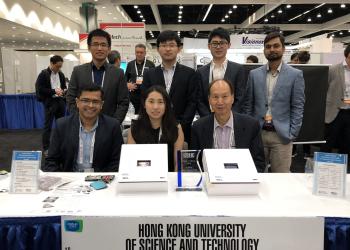
News
HKUST Develops a New Generation of LCD with Higher Efficiency, Resolution and Color Performance
A research team from the State Key Laboratory on Advanced Displays and Optoelectronics Technologies of The Hong Kong University of Science and Technology (HKUST) has developed a new Liquid-crystal display (LCD), which image resolution, energy efficiency as well as color saturation were markedly enhanced, achieving a crucial breakthrough in display technology.
Known as Active Matrix Ferroelectric Liquid Crystal Display (FLCD) - this latest technology developed by a research team led by Chair Professor from the Department of Electronic and Computer Engineering Prof Kwok Hoi-Sing, will see energy efficiency jumped by 3-5 times, and image resolution enhanced by three times – at a lowered cost.
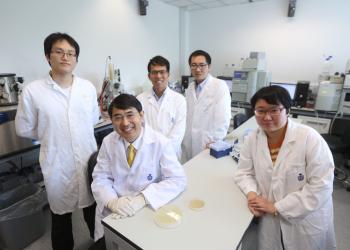
News
HKUST Discovers New Antibiotics Resistance Mechanism Paving the Way for Design of Antibiotics Against Superbugs
Researchers at The Hong Kong University of Science and Technology (HKUST) have identified for the first time the culprit behind the causing of broad-spectrum bacterial resistance to peptide antibiotics - widely perceived as the last-line of defense against antibiotic-resistant bacteria, opening a new direction to the design of new drugs in tackling superbugs.
The discovery – made by Chair Professor from the Division of Life Science Prof Qian Pei-Yuan and his fellow researchers, came in the best moment as the team has also discovered that this enzyme, which they identified as the cause of broad-spectrum bacteria resistance against peptide antibiotics, was actually found in not just a few, but many different strains of bacteria, sounding an alarm against persistent improper use of antibiotics.
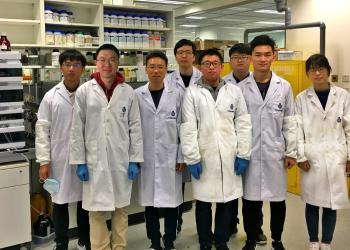
News
HKUST Scientists Find New Way to Produce Chiral Molecules which may Bring Safer and More Affordable Medicine
A research team from the Hong Kong University of Science and Technology (HKUST) has discovered a more efficient and eco-friendly way to produce a family of chiral molecules, which would potentially bring down the cost of chiral medicine and make them more accessible to all.
Over half of the approved drugs now in use in the world are chiral, which treats a wide range of conditions including cardiovascular, respiratory and gastrointestinal diseases. Many chiral drugs are top sellers including high-cholesterol medicine Lipitor, and antibiotic Amoxicillin. But production of chiral drugs are difficult and costly, as the production process is complicated and requires rare and expensive raw materials in general.

